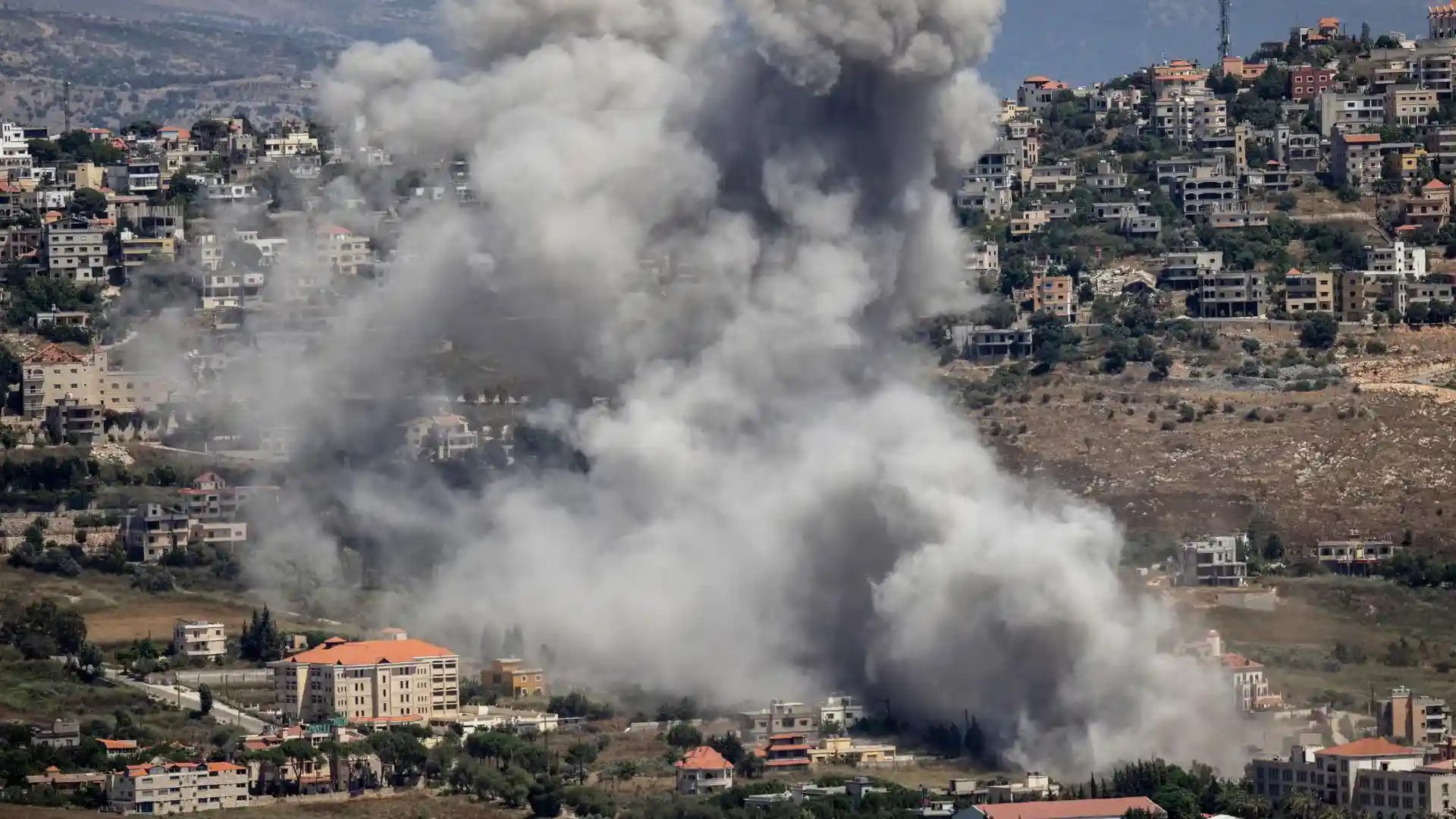Israeli airstrikes rocked southern Lebanon and the outskirts of Beirut on Friday, leaving at least five medics dead as ground forces clashed with Hezbollah fighters in the region.
Continued Israeli Strikes as Hopes for Ceasefire Fade
Israel’s relentless military campaign against Hezbollah continues, despite efforts by U.S. mediator Amos Hochstein to broker a truce. The airstrikes are part of an ongoing escalation in the region, with no immediate signs of a ceasefire. Israeli troops have been clashing with Hezbollah fighters along Lebanon’s southern border, following months of increased military activity since late September.
Hochstein, who visited Beirut earlier this week, expressed optimism about the possibility of a truce, stating that a ceasefire was “within our grasp.” However, after meeting with Israeli officials, including Prime Minister Benjamin Netanyahu and Defense Minister Israel Katz, Hochstein’s efforts to calm tensions appear to have fallen short. His trip aimed to halt the fighting between Israel and Hezbollah, which intensified significantly after Israeli ground troops entered Lebanon on October 1.
Ground Clashes and Escalation Near Khiyam
The battle has intensified, especially around the town of Khiyam, located just six kilometers from the Israeli border. This week, Israeli forces advanced toward the outskirts of Khiyam, a move seen as a prelude to a larger assault. Hezbollah retaliated by firing rockets at Israeli troops east of the town, with reports of multiple rocket attacks throughout Friday.
Israeli forces have been steadily advancing through southern Lebanon, especially into villages to the west of Khiyam. The objective is believed to be isolating the town in preparation for a major military operation.
Five Medics Killed in Israeli Strikes
Israeli airstrikes hit two villages in southern Lebanon on Friday, killing five medics working with a Hezbollah-affiliated rescue unit. According to the Lebanese Health Ministry, these medics were part of the ongoing efforts to provide aid to civilians in the conflict zones. The strike marks a significant loss, adding to the mounting casualties in Lebanon.
The health ministry reported that over 3,500 people have been killed by Israeli strikes in the past year, including more than 200 medical personnel. This heavy toll highlights the ongoing devastation and the risks faced by those working in the humanitarian sector.
Escalation of Strikes in Beirut’s Hezbollah Stronghold
Israel has also intensified its bombing campaign in Beirut’s southern suburbs, a long-time stronghold of Hezbollah. These areas, once densely populated, have seen a surge in airstrikes as Israeli forces continue their military efforts. On Friday, Israel issued evacuation orders for several buildings in the region via social media platform X.
Footage from Reuters showed one of the Israeli strikes hitting a multi-story building in Beirut, causing it to collapse in a massive cloud of smoke. This strike is a clear escalation of the conflict in the capital, underscoring Israel’s ongoing strategy to target Hezbollah’s infrastructure.
Israel’s Strategic Objectives
Israel has stated that its primary aim is to secure the safe return of tens of thousands of people who had been evacuated from northern Israel due to Hezbollah rocket attacks. These attacks began in October 2023 when Hezbollah launched rockets across the border in solidarity with Hamas in the ongoing Gaza war. In response, Israel has launched a military campaign to weaken Hezbollah’s capabilities and push back against the growing threats from the Iran-backed militant group.
(Includes inputs from online sources)
ALSO READ:Lockdown In London’s US Embassy Area Following Loud Bang, Police Investigate
















